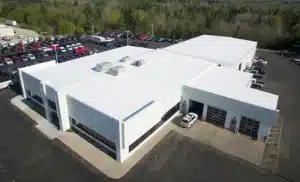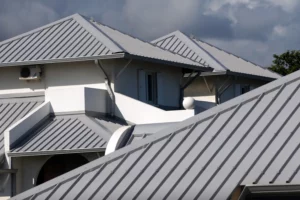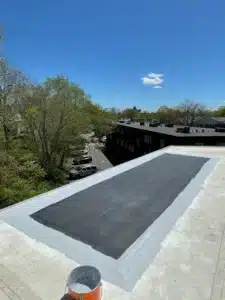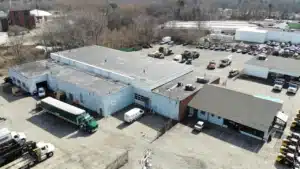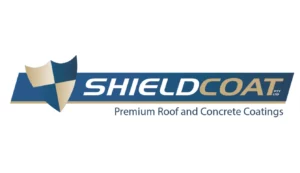Flat Roof Drainage: Tips and Insights for Commercial Buildings
Having a flat roof can be a great advantage for commercial buildings, as it provides additional space for various purposes. However, one crucial aspect that often gets overlooked is flat roof drainage. Proper drainage is essential to prevent water pooling and potential damage to your roof. In this article, we will provide you with valuable information, tips, and insights on flat roof drainage for commercial buildings.
The Importance of Flat Roof Drainage
When it comes to flat roofs, proper drainage is of utmost importance. Without an effective drainage system, rainwater and other forms of precipitation can accumulate on the roof’s surface, leading to a myriad of issues. Excessive water pooling can cause structural damage to your roof, compromising its integrity and reducing its lifespan. Additionally, stagnant water can attract insects, promote mold growth, and result in leaks, which can be costly to repair.
To ensure your commercial building’s flat roof remains in top condition, it’s crucial to implement a robust drainage system that effectively moves water away from the roof’s surface.
Tips for Optimizing Flat Roof Drainage
1. Adequate Slope: One of the most critical factors for efficient flat roof drainage is ensuring proper slope. A minimum slope of 1/4 inch per foot is recommended to allow water to flow towards the drains. This slope should be established during the construction phase and maintained regularly.
2. Quality Drainage System: Investing in a high-quality roof drainage system is essential for reliable water removal. This system generally includes gutters, downspouts, scuppers, and drains. Regular inspection, maintenance, and cleaning of these components are crucial to prevent clogs and blockages.
3. Regular Maintenance: Regularly inspecting and maintaining your flat roof drainage system is key to its effectiveness. Remove any debris, such as leaves or twigs, that may accumulate in gutters and drains. Schedule routine inspections and cleanings to ensure optimal functionality.
4. Clear Pathways: Ensure that the pathways for water flow are clear and unobstructed. Avoid placing objects or equipment that may impede water movement or cause blockages. Trim overhanging tree branches that may shed leaves onto the roof, clogging the drainage system.
5. Waterproof Membrane: Applying a waterproof membrane to your flat roof can help prevent leaks and ensure the water flows towards the designated drainage points. Consult with a professional roofing contractor to determine the best waterproofing solution for your specific roof type.
Insights into Flat Roof Drainage Systems
1. Gutters: Gutters play a vital role in collecting water runoff from the roof and channeling it towards downspouts. It’s essential to have properly sized gutters and regularly clean them to prevent clogging.
2. Downspouts: Downspouts are responsible for directing water from the gutters safely away from the building’s foundation. Ensure downspouts are securely attached and have extensions that direct water at least five feet away from the building to prevent water accumulation near the foundation.
3. Scuppers: Scuppers are openings in the wall of a building that allow water to drain off the roof. Regularly inspect scuppers for any blockages and ensure they are positioned correctly for efficient drainage.
4. Drains: Drains are typically found in low areas of the roof where water tends to accumulate. Regularly inspect and maintain these drains to prevent clogs and ensure proper water removal.
In conclusion, flat roof drainage is a crucial aspect of maintaining the integrity and longevity of your commercial building’s roof. By following the tips and insights provided in this article, you can optimize your flat roof drainage system, preventing water damage and expensive repairs. Remember to regularly inspect, clean, and maintain your drainage system to ensure its optimal performance. Protect your investment and keep your commercial building’s flat roof in excellent condition with an efficient and well-maintained drainage system.

